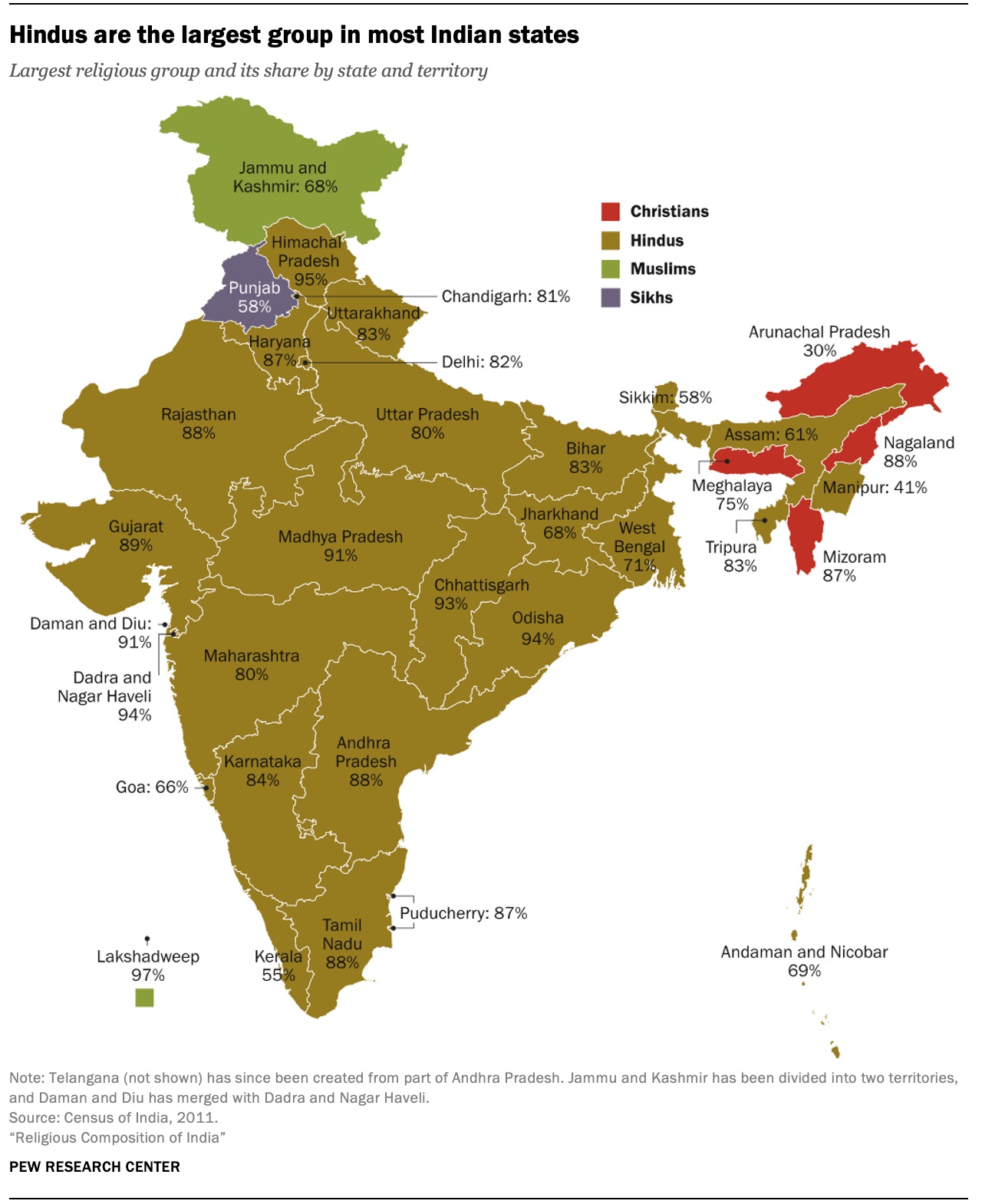Note4Students
From UPSC perspective, the following things are important :
Prelims level: Demographic transition of India
Mains level: Minority population issues

The religious composition of India’s population since Partition has remained largely stable according to a new study published by the Pew Research Centre, a non-profit based in Washington DC.
About the report
- The study, based on data sourced from India’s decennial census and the National Family Health Survey (NFHS), looked at the three main factors that are known to cause changes in the religious composition of populations — fertility rate, migration, and conversions.
- Both Hindus and Muslims, the two largest religious groups, shown not only a marked decline but also a convergence in fertility rates.
- In terms of absolute numbers, every major religion in India saw its numbers rise.
Significance of the report
- These findings, which come as a complement on religious tolerance and segregation in India.
- It is significant in the context of two major issues that have occupied centre stage in recent times — the controversy over the Citizenship Amendment Act (CAA) and the National Register of Citizens (NRC).
- This report also gives a strong message to those fundamentalists who perceive India as a living hell for minorities.
Key findings

(a) Fertility Rates are declining
- With regard to fertility rates, the study found that Muslims, who had the highest fertility rate, also had the sharpest decline in fertility rates.
- From 1992 to 2015, the total fertility rates of Muslims declined from 4.4 to 2.6, while that of Hindus declined from 3.3 to 2.1.
- This indicates that the gaps in childbearing between India’s religious groups are much smaller than they used to be.
- The average fertility rate in India today is 2.2, which is higher than the rates in economically advanced countries such as the U.S. (1.6), but much lower than what it was in 1992 (3.4) or 1951 (5.9).
(b) Marked slowdown
- Although growth rates have declined for all of India’s major religious groups, the slowdown has been more pronounced among religious minorities, who outpaced Hindus in earlier decades.
- From 2001 to 2011, the difference in growth between Muslims (24.7%) and Indians overall (17.7%) was 7 percentage points.
- India’s Christian population grew at the slowest pace of the three largest groups in the most recent census decade — gaining 15.7% between 2001 and 2011, a far lower growth rate than the one recorded in the decade following Partition (29.0%).
(c) ‘No’ Religions group
- Interestingly, out of India’s total population of 1,200 million, about 8 million did not belong to any of the six major religious groups.
- Within this category, mostly comprising adivasi people, the largest grouping was of Sarnas (nearly 5 million adherents), followed by Gond (1 million) and Sari Dharma (5,10,000).
(d) Migration
- The study says that since the 1950s, migration has had only a modest impact on India’s religious composition.
- More than 99% of people who live in India were also born in India, and migrants leaving India outnumber immigrants three-to-one, with “Muslims more likely than Hindus to leave India”, while “immigrants into India from Muslim-majority counties are disproportionately Hindu.”
(e) Religious conversions
- Religious conversion has also had a negligible impact on India’s overall composition, with 98% of Indian adults still identifying with the religion in which they were raised.
UPSC 2022 countdown has begun! Get your personal guidance plan now! (Click here)
Get an IAS/IPS ranker as your 1: 1 personal mentor for UPSC 2024
